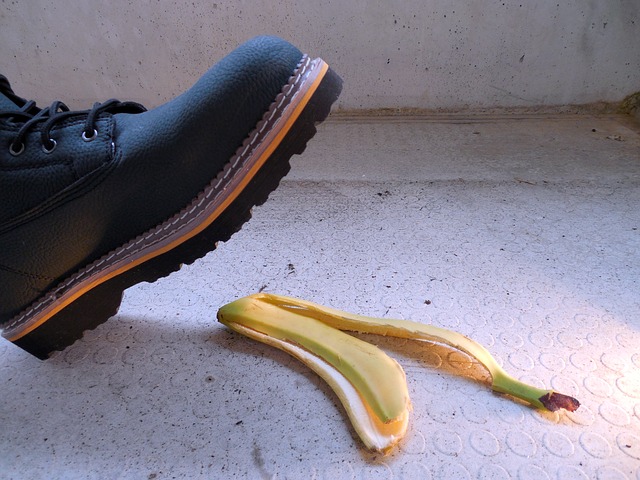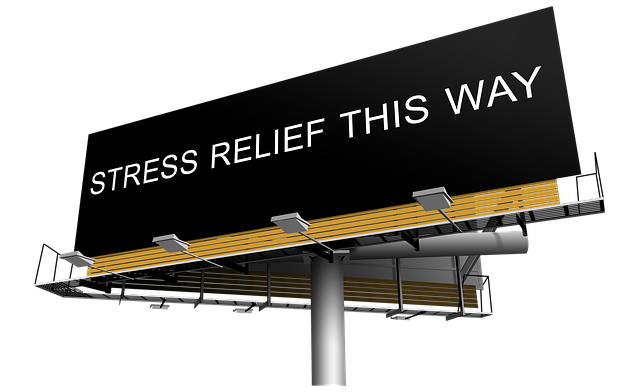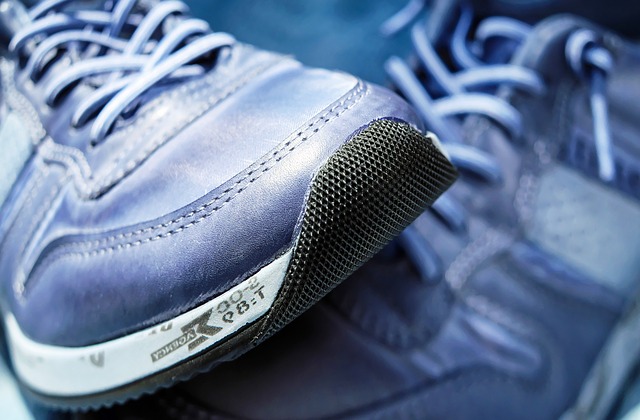Blog
Are you suffering after a car crash? Chiropractic can help.
Chiropractic is a holistic approach to healthcare that focuses on the musculoskeletal system, including the spine, joints, and nerves. It is commonly used to treat injuries from car crashes, as it can help alleviate pain, improve range of motion, and promote healing.
One of the most common injuries from car crashes is whiplash, which occurs when the head is jerked forward and then backward, causing strain and damage to the neck and upper back. A chiropractor can diagnose and treat whiplash by performing spinal adjustments and manipulations that realign the spine and reduce tension in the neck and upper back. In addition, they may also use therapeutic techniques such as massage, stretching, and strengthening exercises to relieve pain, improve mobility, and support healing.
Chiropractic can also help treat other types of injuries from car crashes, such as back pain, headaches, and nerve damage. By addressing the root cause of the injury, rather than just treating the symptoms, chiropractic helps the body to heal itself and prevent future injury. With regular chiropractic care, patients can experience reduced pain, improved function, and a better quality of life following a car crash.
Unavoidable Scar Tissue Has A Fix
Scar tissue is an unavoidable part of the body’s healing process, after traumatic injury, surgery, or even as a response to repetitive micro-traumas (think scar tissue building up in the fingers after years of typing). Much like inflammation, another natural healing response, scar tissue can accumulate to a point where it inhibits normal functioning and causes pain and stiffness. The main problem is that scar tissue is, by some estimates, only 60% as elastic as the tissue it replaces, meaning that the material itself is inherently stiffer. When left unchecked, scar tissue can proliferate and adhere to healthy tissue in the surrounding area, which can restrict the normal range of motion, becoming especially problematic when the area in question is a joint that requires regular movement.
The happy part of this story is that chiropractic is a modality that seems almost tailor-made for combating scar tissue accumulation. At our office, we utilize modalities such as the Graston Technique, Active Release Technique, and Myofascial Release to break up scar tissue and prevent it from accumulating and interfering with your way of being. Furthermore, scar tissue can actively pull the body, in particular the back, out of balance and we want to prevent this from happening. Trigger point therapy and simple massage techniques can get deep into the tissues and dissipate the scar tissue.
If scar tissue build-up has you in its grips, give our office a call and schedule an appointment so we can start you on a path toward healing today!
Poor Posture and Your Head is Aching
For most people suffering from chronic tension headaches, it may be time to take a look at your lifestyle: headaches are most often a reflection of the foods and chemicals we consume, the activities (or lack thereof) we pursue, and the mental and physical stresses we go through on a daily basis. You may not be able to control the demands of a busy life, but it is more likely that you can control factors such as food intake, exercise, and one more, less thought-of factor: posture.
Posture is a factor that can absolutely cause headaches and is absolutely within your control. Many of us start the work day with the best intentions sitting up straight but as hours pass by and stress accumulates as do the caffeine levels, our head starts moving toward the screen, the back rounds and shoulders tighten. In this position, the head is no longer centered over the spine and its weight is distributed unevenly; furthermore, neck and shoulder muscles are being strained in the process as they try to compensate for this imbalance. Muscle spasm is a logical conclusion and if the pain is referred to the nerves in your head, you could very well end up with a headache directly caused by posture.
This is a straightforward example and headaches are anything but; however, it is an analogy that shows how an unconscious factor could be turned to your advantage. At our chiropractic office, we don’t want to let poor posture cause you headaches any longer. We invite you to call our office and schedule an appointment so that we can help you find ways to break the cycles of poor posture and stress accumulation which are keeping you from feeling your best.
Sleeping Style
What type of sleeper are you?
Perhaps the most important type is the sufficient sleeper, the one who gets at least 7.5 hours of sleep (5 cycles of 1.5 hours each), sleeps deeply, and wakes up refreshed. Unfortunately, this is a rapidly shrinking demographic, due to the incursions of technology, the high pace of urban life, and the myriad stresses, both physical and mental, that are natural to humans. What does inadequate sleep do to someone, besides increasing stress and limiting physical performance? At a deeper level, inadequate sleep could be said to negatively affect the most important systems in the human body.
Are your nerves on edge?
A lack of quality sleep puts your nerves on edge and limits the amount of oxygen that is supplied to muscles during the rest and rehabilitation phase of sleep. Without enough oxygen, lactic acid is allowed to build up, leading to muscle tension that could cause pain or stiffness in the morning, the antithesis of waking up refreshed.
We strive to help people find a way to derive the benefits of restful sleep while not causing any pain to their bodies. The primary goal of any sleeper should be to keep the spine as close to natural alignment as possible, depending on factors including sleep posture, quality of the mattress, and pillow. Here are some recommendations for sleeping posture:
- For back sleepers, the primary pitfall of this position is the pressure it can put on the lower back. A small pillow can be put under the knees to raise them slightly and alleviate pressure from accruing in the lower spine. Try to use a head pillow that keeps the spine straight and doesn’t angle the neck up or down.
- Side sleepers need to follow the same principle for finding a pillow that keeps the spine straight through the neck. Bending the knees to approximate the fetal position will help remove pressure from the spine as well.
- Sleeping on the stomach is perhaps the least conducive position for a good night’s sleep. It puts strain on the lower back and core muscles, encourages an unnatural curvature of the spine, and can leave the head and neck at awkward angles. If it is the only way you can fall asleep, try to prop a pillow underneath your stomach to keep your spine level with your head.
For help getting rid of pain and finding a restful night’s sleep, give our office a call and schedule an appointment today!
Treating Herniated Discs
Diagnosing a herniated disc begins with a conversation: what are your specific symptoms and how are they impacting your life? From a blank canvas, we paint a composite picture of your condition that includes your medical history, and the findings of a physical exam and several neurological and orthopedic tests. We want to know whether your nerves are sending and receiving messages correctly, whether your reflexes are responsive, and what causes you pain.
Some herniated discs require more aggressive forms of treatment: surgical intervention or epidural injections, but most will respond well to chiropractic treatment.
The body is attempting to heal itself.
It will do so successfully if we can buy it enough time by reducing the pain and restoring movement to the region. Herniated disc pain is often perpetuated by a cycle of stagnation: the pain prevents you from moving, but the lack of movement stiffens joints and contributes to pain. Chiropractic adjustment returns movement to spinal joints, freeing your back from this cycle. Manual therapy and therapeutic exercises target tissues that may have become damaged or strained during the process.
From a wellness chiropractic standpoint, we want you to rehabilitate as quickly as possible. As your pain lifts, we incorporate therapeutic exercises and gentle stretching of restrictive muscles to return the region to a picture of health.
If you are ready to heal your herniated disc, call our office to schedule an appointment today.
Healing a Herniated Disc
The plain truth is that most herniated discs WILL heal themselves, given enough time and attention to rehabilitation. Depending on the location of the compromised disc and the way it is herniated, healing times vary from as low as 4-6 weeks to longer than a year and certain people and injuries are more predisposed to re-aggravation. The point is that each person’s injury is a reflection of their circumstances: lifestyle choices, degrees of strength and flexibility, genetic predisposition, and other factors contribute to a breaking point that leaves you in pain. Outdated wisdom would have you resting for weeks on end until the injury is healed, at which point you can supposedly magically get up and go. Today things are different: while an initial period of rest may be advisable, completely avoiding activity may be counterproductive to your healing.
At our office, we focus on alleviating the pain first so that you can conduct activities despite your physical limitation. Using chiropractic adjustment, therapeutic massage, and corrective exercise and strengthening, we open up the injurious region to an influx of healing nutrients and oxygen with enhanced blood flow. We focus on rebuilding the region by strengthening supportive muscles and using chiropractic adjustment to make sure that your range of motion is protected.
When the pain is manageable, we want you to resume a schedule of normal activity, albeit at a reduced intensity; any activity that creates or aggravates your symptoms should be immediately ceased. However, most people find that even with their pain they can perform light aerobic activities, stretches, and certain strengthening exercises. This prevents muscles from atrophying and tissues from becoming more vulnerable to injury due to lack of movement.
Stress Management
Stress comes in many shapes and sizes and doses and it has a precarious relationship with the workplace. While working to make money to live is necessarily one of the largest stressors in human existence, there are ways to manage your stress to avoid becoming entirely spun out. Everyone knows that guy or gal who prides themselves on performing under pressure, but this begs the question: are they actually working smarter or just harder?
We believe in the former over the latter as a formula for success, and we want to help you be proactive in the management of your stress. In our office we can help correct physical ailments that may be causing you pain and, consequently, stress, as well as help regulate your nervous system to optimize your functionality as both a worker and a healthy human.
Other ways we can help are by helping you find techniques to keep you cool under pressure throughout the day. Here are some simple ways we have found to prove effective:
- Chewing gum: studies show that it actually decreases anxiety.
- Cooling down: anger and anxiety have a tendency to raise blood temperature which then makes you feel overheated and angry. Placing a cool towel on your wrists is a great technique for managing this.
- Squeezing a stress ball: a simple, tried and true method for squeezing out the stress.
- Getting outside: if its sunny, a boost of vitamin D is always helpful and a vigorous walk can do wonders for productivity and alleviating stress.
- Green tea & coffee: Despite what coffee culture would have you believe, caffeine can actually cause more anxiety and interfere with productivity more than it helps. Green tea, on the other hand, contains health-boosting anti-oxidants and a chemical called L-Theanine which promotes calm.
- Getting extra rest helps cognitive function and reduces stress levels even in notoriously stressful situations.
- Drinking water also helps relieve stress by increasing mental activity which in turn helps solve problems faster.
If all else fails, take a deep breath. We are here to help you; give our office a call and we can start working on stress management together today.
Breathe Better
A sub-conscious activity that we sometimes perform in excess of 20,000 times a day? A lot of people would probably jump to blinking, which is correct also, but how about breathing? And while the muscles that control the reflexes of blinking stay in good working order throughout life, this is not necessarily the case for the diaphragm and its accessory muscles. The nerves that power the diaphragm can be interfered with, core muscles can be weakened with misuse and poor posture can subdue our respiratory process, meaning that we are not getting the oxygen our cells need to refresh and respire regularly. This is a problem!
The diaphragm is a sheet of muscle that separates the chest and lungs from the abdomen and is the engine of the respiratory system. Powered by the phrenic nerve, which exits between the C3 and C5 vertebrae, the diaphragm helps to circulate oxygen into the bloodstream, facilitate the exit of CO2 and contribute to the balance of the body and the health of the cells.
70-80% of each breath should be drawn using the diaphragm, yet people are less aware than ever of how to breathe properly. This leads to shallow breath patterns that resemble people suffering from anxiety and can interfere with their quality of life. At our chiropractic office, we are big fans of breathing properly. We keep your spine aligned so that your diaphragm can function fluidly, and help you keep the right muscles in a state of strength so that each breath drawn captures the oxygen you need to thrive. We can also show you proper breathing techniques and how posture affects your ability to breathe as well.
Foods for Strong Bones
One of the greatest things we can do to combat the bodily degeneration that comes with aging is to fortify our bones! Conditions such as osteoporosis, rheumatoid arthritis, and osteoarthritis have traditionally been associated with the elderly, but the startling fact is that with a shift toward a more sedentary society, Americans are facing the onset of degenerative bone conditions at an earlier age than ever. It is time that we start taking this issue seriously and being proactive about keeping our bones healthy and fortified against the incursions of inactivity and age.
Nutrition for healthy bones centers around two main ingredients: calcium for bone density and support and vitamin D as a supplement for calcium absorption and bone growth. Magnesium is another nutrient that helps with calcium absorption, although too much calcium can actually prevent magnesium from being absorbed. It is all about balance, after all. Here are some delicious food options that will keep your bones strong:
- Dairy, of the kind that is fortified with vitamin D: Yogurt, milk, cheese, and egg (particularly the yolk) contains high values of your daily percentage for both calcium and vitamin D.
- Salmon, while more renowned for its omega-3 properties, also contains almost your full daily serving of vitamin D.
- Dark, leafy vegetables such as spinach and collard greens are rich in calcium.
- Fortified cereal is delicious at any time of day.
- Fortified orange juice
Vitamin D is also the sunshine vitamin, so when you can make sure you get out and expose your skin to a reasonable amount of sunlight, without getting burned of course! You don’t need to be a professional in the kitchen or develop a taste for something you dislike in order to recoup the proper amounts of nutrients you need to keep your bones healthy. As your chiropractor, we care about your musculoskeletal well-being throughout life and that is why we practice holistic care that includes chiropractic treatment, exercise, and nutrition. Give our office a call and see how we can make small, yet delicious modifications to your diet that will help you stay proactive about, “getting old.”
Running Form
For all of its health benefits and ease of accessibility, it is almost unequaled as a mode of exercise and, at our chiropractic office, we celebrate the runners in our community. We also want to help them minimize the collateral damage incurred by joints in the back (not to mention, the knees!) which are exposed to repetitive trauma and hard surfaces. By all means continue running for the increased lung capacity and improved circulation, for the stress reduction, stretching and strengthening, but heed our advice regarding the pitfalls of running:
- Posture is important, to prevent a forward tilt of the pelvis which can destabilize the lower spine. Focus on keeping your face forward and not down, establishing your hips as your center of gravity, and keeping your shoulders back and relaxed.
- Mix up your running surfaces: strictly running on concrete is likely to cause accelerated cartilage degeneration and joint damage.
- Change your running shoes every 400-500 miles. Despite the financial burden, it is the only serious investment required for running and it goes a long way to protect your joints from being the only agents acting for shock absorption.
Your body is a fine-tuned machine that can handle the physical rigors of running but, given long enough, it can take a toll. We are here to make sure that your body is maintained along the way, ensuring that muscles are free of tension, joints in the back are adjusted and nerves are free of irritation. This helps regulate the nervous system, prevents pain, and helps you recover more quicker.









